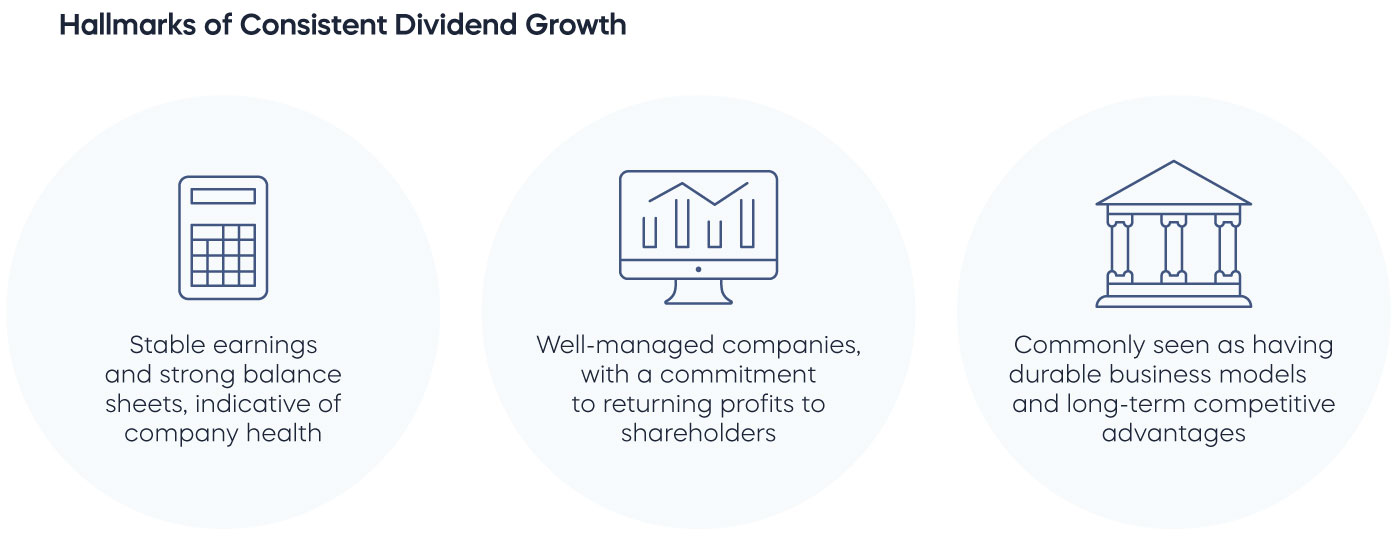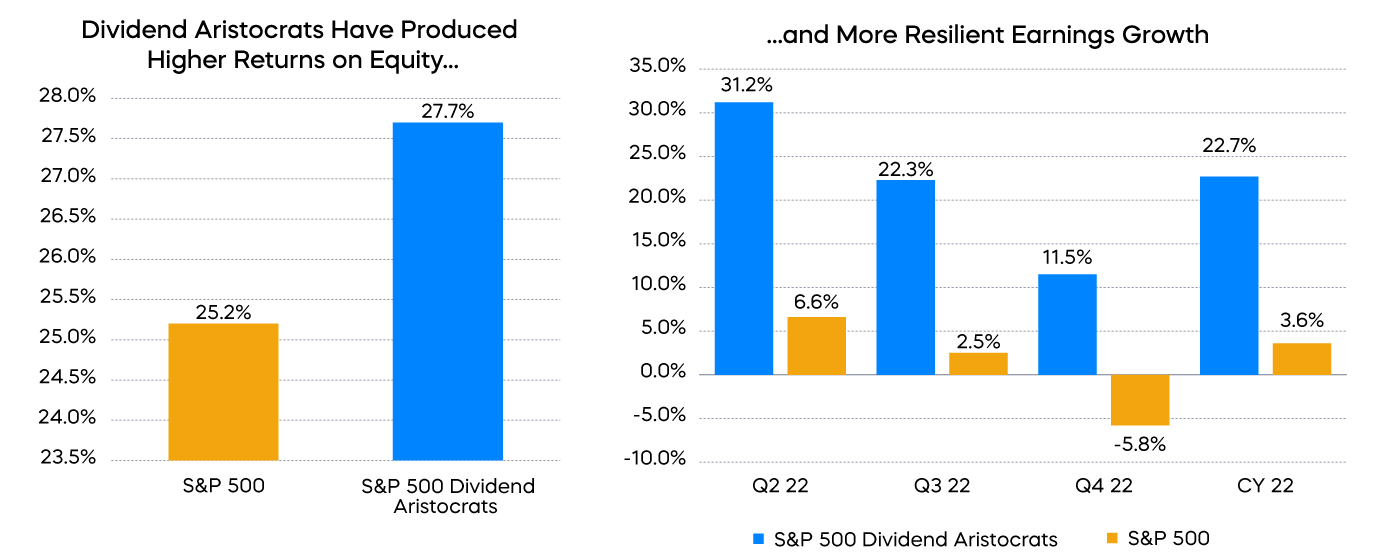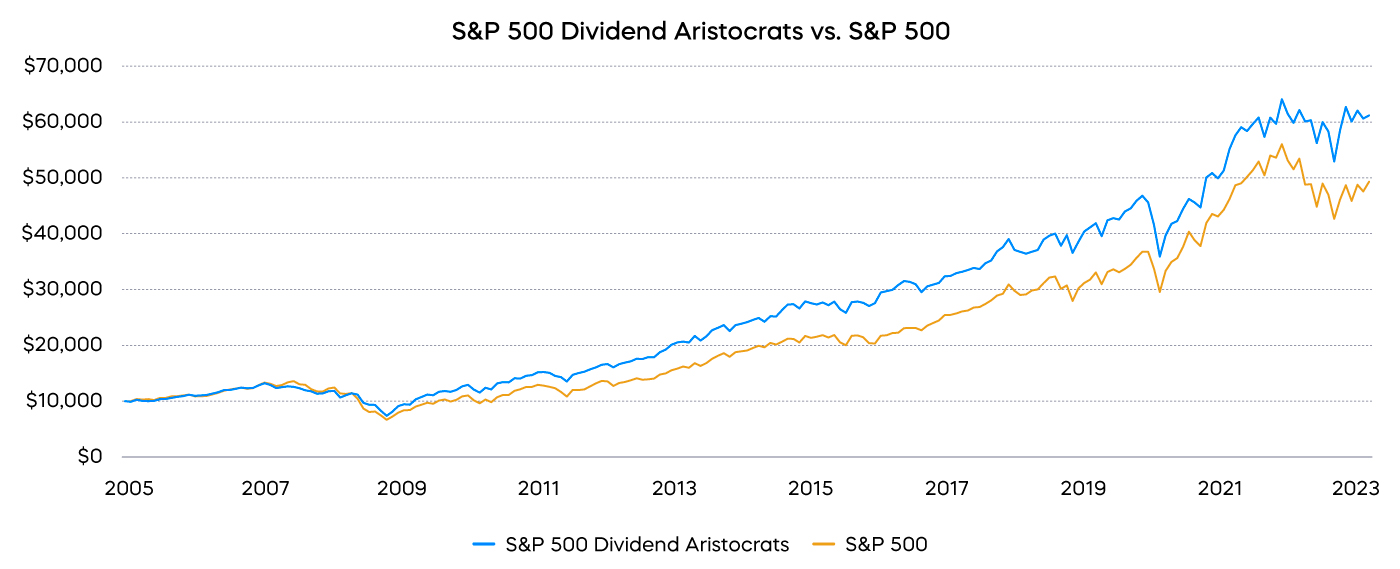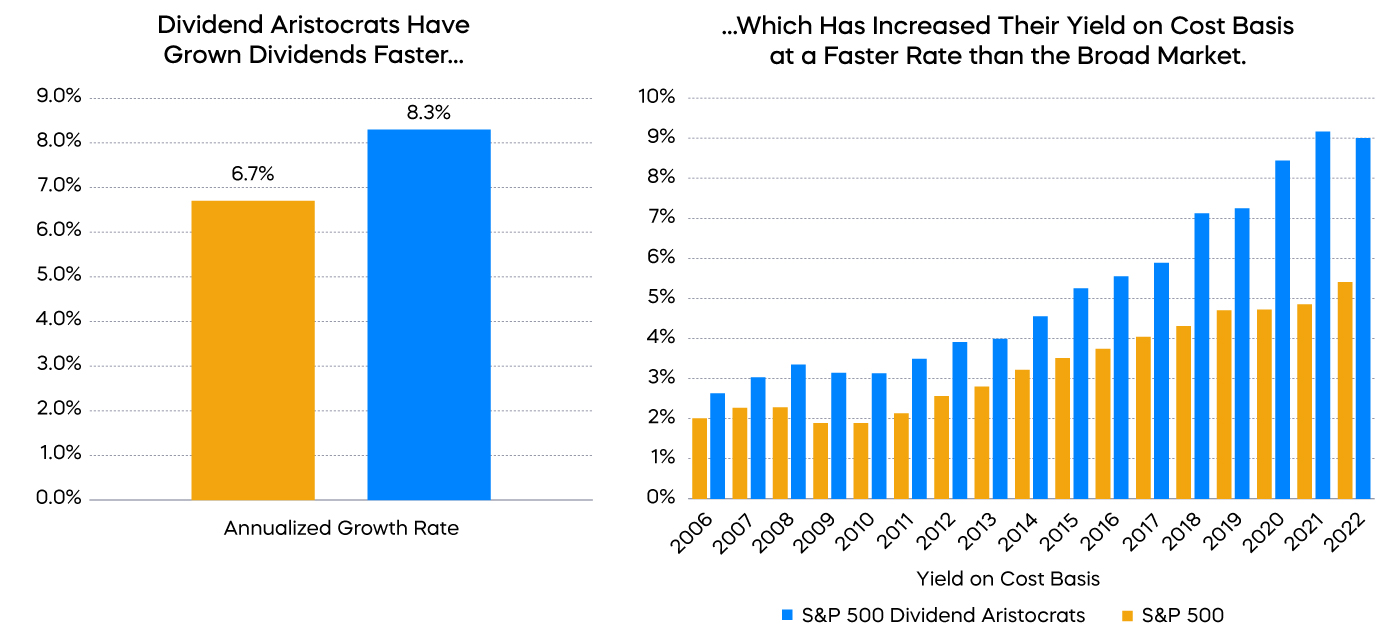Companies that consistently grow their dividends are popular with investors. These high-quality companies typically offer stable earnings and strong histories of profit and growth, as well as solid fundamentals and business models.
Historically, dividend growth companies have outperformed the broader S&P 500 index and provided durable income growth across market caps and industry sectors. These attributes have timeless appeal, but they can be particularly relevant during turbulent markets.

Enduring Quality
Quality always deserves a place in our investment portfolios. In the investing sense, quality can be measured using both qualitative and quantitative metrics.
-
Qualitative — Companies that have durable and sustainable competitive advantages (what Warren Buffett calls an “economic moat”) and are run by shareholder-friendly management teams are generally considered high quality.
-
Quantitative — Companies’ quality can be quantified by measuring their balance sheets and earnings. The more a company earns from its assets, equity and capital, and the lower its levels of debt, the higher its perceived quality. It is even better if those results have been consistently produced.
But there may be a simpler way to identify quality through examining a company’s dividend history. Companies that have consistently increased their dividends year after year tend to be of high quality. They’ve endured—and even thrived—through countless up and down economic cycles. And they’ve steadily increased revenues and cash flows, which in turn has enabled them to consistently increase their payouts to shareholders.
Dividends may be the strongest signal a company can send about its ability to increase profits and cash flows into the future. The S&P 500 Dividend Aristocrats, for example, are an elite group of large-cap companies that have grown their dividends for at least 25 consecutive years, with most doing so for over 40 years. They have produced greater return on equity and shown significantly more resilient earnings growth over time compared with the broader S&P 500.

All-Weather Outperformance
There are many potential benefits that come with investing in quality companies that continually grow their dividends. For example, a significant benefit of the S&P 500 Dividend Aristocrats is its history of all-weather outperformance. With its strong track record, investors can potentially use the Dividend Aristocrats to help anchor almost any well-diversified portfolio across a myriad of market conditions.
-
Since its inception, the S&P 500 Dividend Aristocrats Index has outperformed the S&P 500 with lower levels of volatility—potentially turning a $10k initial investment made in May 2005 into over $61k by March 2023.
-
With an upside-downside capture1 of 91% and 80%, the S&P 500 Dividend Aristocrats has delivered strong performance in both rising and falling markets.
-
It has been particularly resilient during market drawdowns, outperforming the S&P 500 by over 12% in 2022. In fact, the Dividend Aristocrats Index has outperformed the S&P 500 during eight of the 10 worst quarterly drawdowns since 2005.
Consistent Dividend Growth Strategies Have Outperformed, with Less Volatility

Focusing on Dividend Growth vs. High Yield
Dividend strategies are often used to generate portfolio income. Too often, however, investors focus on immediate levels of yield. We view dividend income growth and sustainability as more important factors that demand greater attention, especially during periods of uncertainty.
-
High dividend yielding companies often reduce dividends in difficult periods—during the Great Financial Crisis of 2008, for example.
-
High yielders tend to have higher dividend payout ratios, affording them less financial flexibility—if revenues or cash flows suffer during a downturn, vulnerable dividends can put pressure on stock prices.
-
By consistently growing their dividends, the S&P 500 Dividend Aristocrats have demonstrated higher levels of yield on cost compared to high dividend yielding companies, despite lower levels of initial yield.

The Takeaway
While growth and value styles of investing often receive more attention, focusing on quality is a timeless strategy for anchoring your portfolio. An easy way to identify quality is to look for companies with an extended history of dividend growth. Companies in the S&P 500 Dividend Aristocrats Index have grown their dividends for at least 25 consecutive years, and they have outperformed the S&P 500 over time. As a group, the S&P 500 Dividend Aristocrats have also provided faster and more durable income growth, producing attractive levels of yield on cost.
1Upside/downside capture ratios show whether an investment outperformed (gained more or lost less than) a benchmark during periods of market strength or weakness, and if so, by how much.